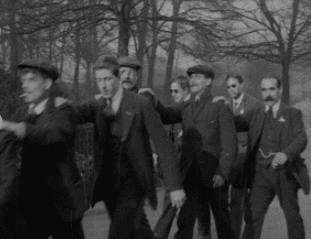Remembrance
Supporting staff and students to achieve their full potential since 1968.
Welcome to our weekly CENMAC blog post.
Remembrance | by David Howard, CENMAC Advisory Teacher
This week’s Blog remembers those who fought for us and how they had a direct impact on the role of today’s assistive technology.
Remembrance honours those who serve to defend our democratic freedoms and way of life. We unite across faiths, cultures and backgrounds to remember the service and sacrifice of the Armed Forces community from Britain and the Commonwealth. We will remember them.
But why does Remembrance Day have a special significance for CENMAC and the young people we support?
As a direct result of the first world war Britain needed to adapt to the challenge of the huge numbers of ex-servicemen who came home with permanent disabilities as a result of their wounds.
There was a huge demand for Artificial limbs but the ones on offer were heavy and made of wood. The Disabled Society worked hard to design and produce light aluminium limbs instead, and Queen Mary’s Hospital in Roehampton, London – the main English limb-fitting hospital for ex-servicemen – fitted more and more each year.
At Queens Hospital in Sidcup Kent, Plastic surgeon Sir Harold Gillies pioneered facial surgery. The artist Francis Derwent-Wood worked there with him, creating masks for burned patients whose faces could not be fully restored by surgery.
As a direct result of the first world war Britain needed to adapt to the challenge of the huge numbers of ex-servicemen who came home with permanent disabilities as a result of their wounds.
Now the war was over, ex-servicemen needed to learn new skills. St Dunstan’s in Regent’s Park, London housed a total of 1,833 blinded ex-servicemen as they recovered. The soldiers learned new skills and got exercise. People were intrigued – they often visited the men and accompanied them to concerts and theatres.
Another home for soldiers and sailors with disabilities, the Star and Garter in Richmond, Surrey, opened in 1916. Some ex-servicemen worked on a poultry farm known as No-Man’s Land as part of their retraining.
These are the pre-cursers of what we do today.
The pioneering work by Doctors, Educators and Carers developing and adapting tools and re-thinking the way these servicemen worked and lived helped them to reintegrate into life after the war, has had a direct influence on the work we do today. Finding ways to adapt and modify everyday things to solve difficult challenges and give everyone – no matter what challenges face them, the opportunity to be their best and live fulfilled and productive lives.
Some interesting websites for further reading:
- History of Assistive Technology: en.wikipedia.org/wiki/Assistive_technology
- Very interesting article outlining what happened to first world war veterans: heritagecalling.com

Still from Pathé film: The Blind from St Dunstan’s Enjoy Themselves on the River, 1916. © British Pathé
Don’t forget you can share your CENMAC experiences for our CENMAC family to enjoy.
#AssistiveTechnology #Education #Mainstream #SEN #Remembrance #VisionImpaired #Disability #25YearsDisabilityDiscriminationAct #Technology #Support #Solutions



